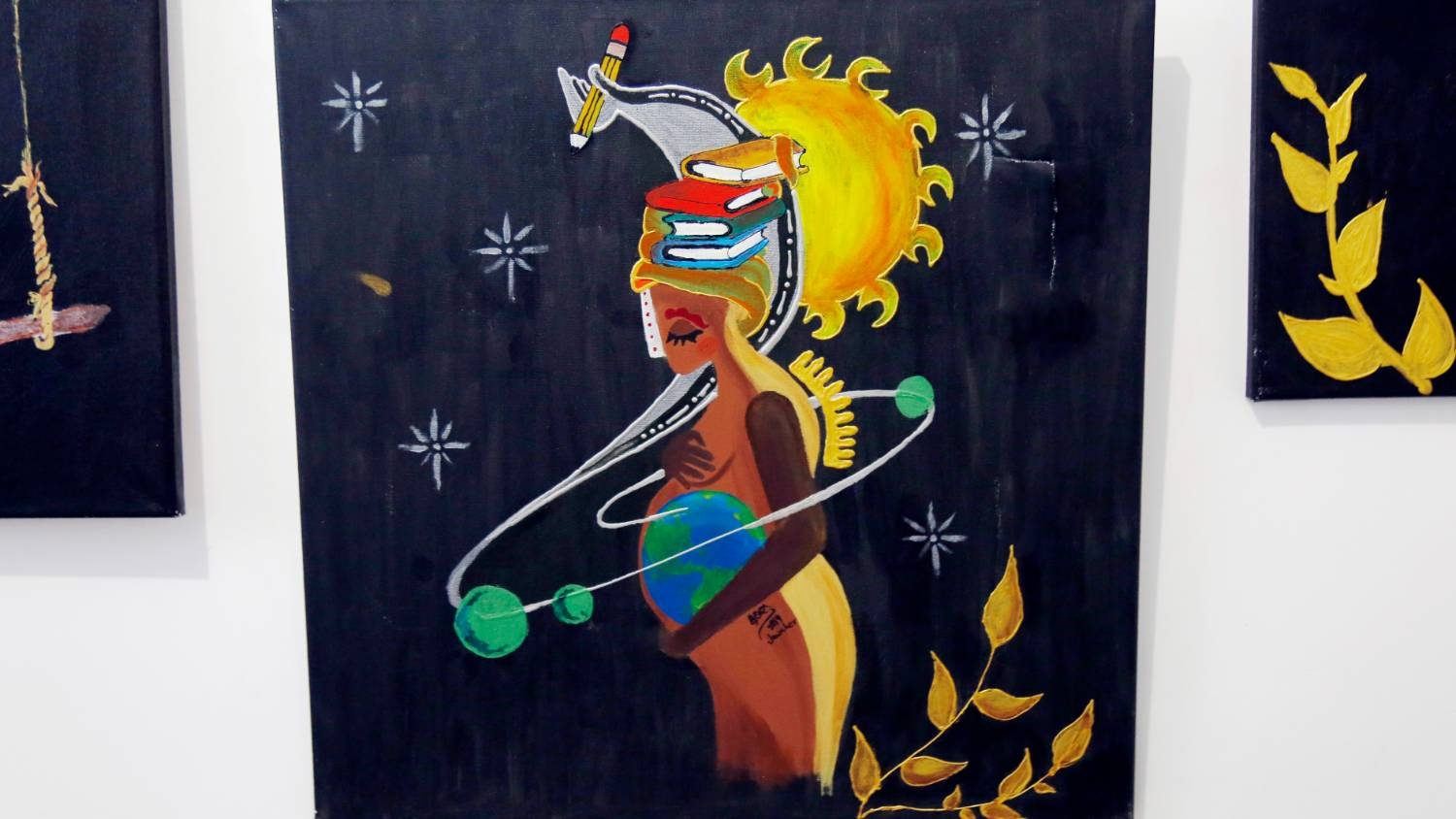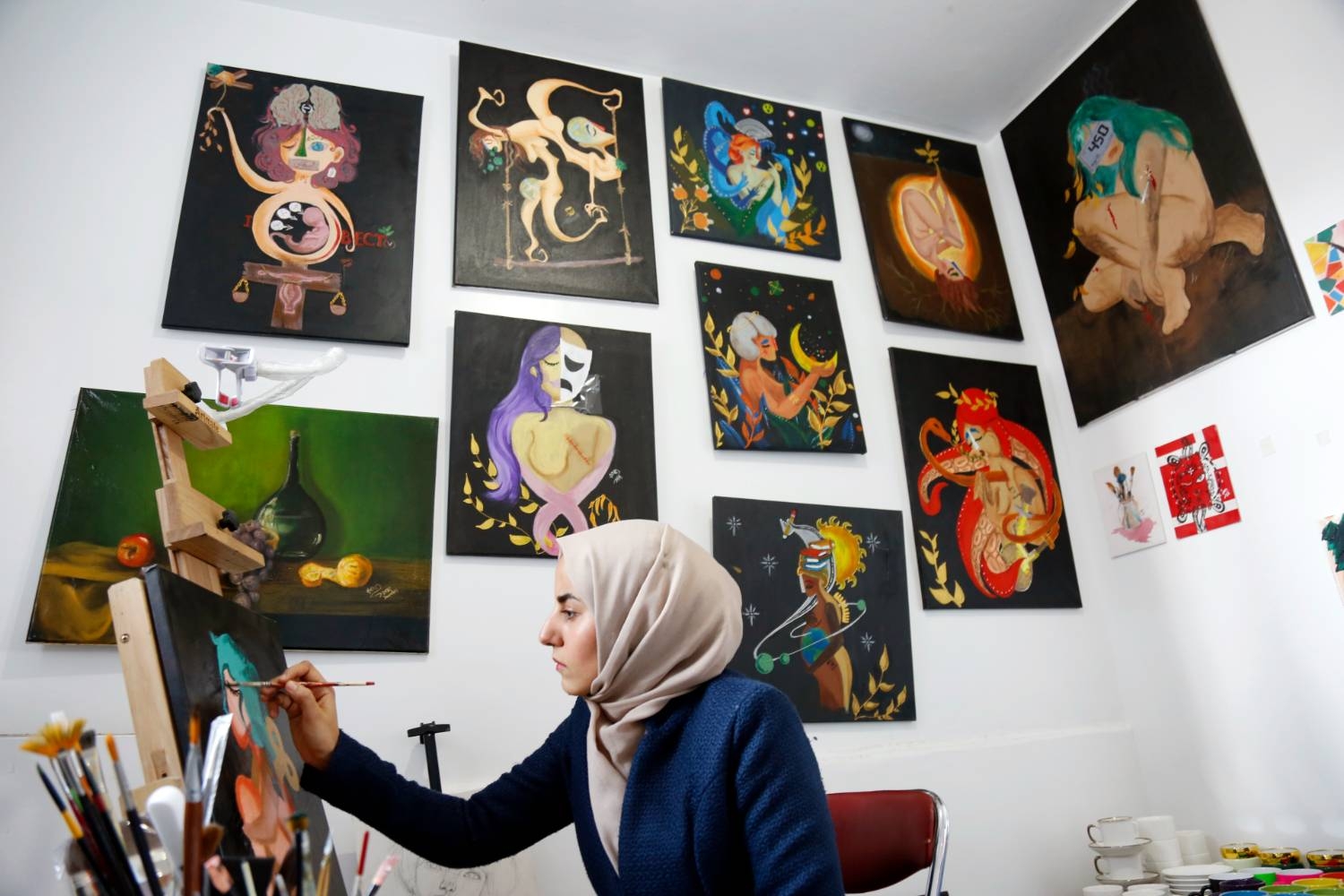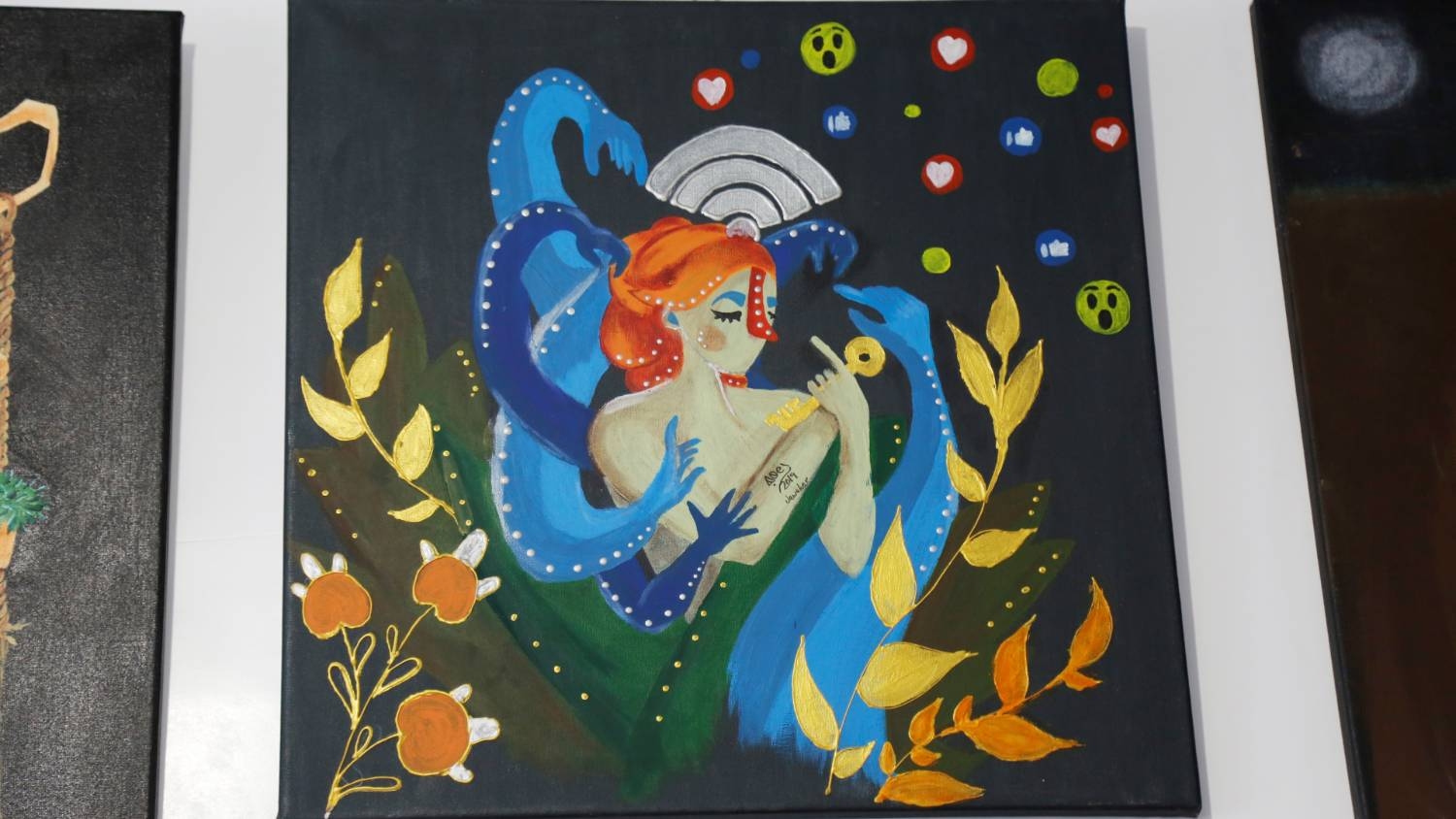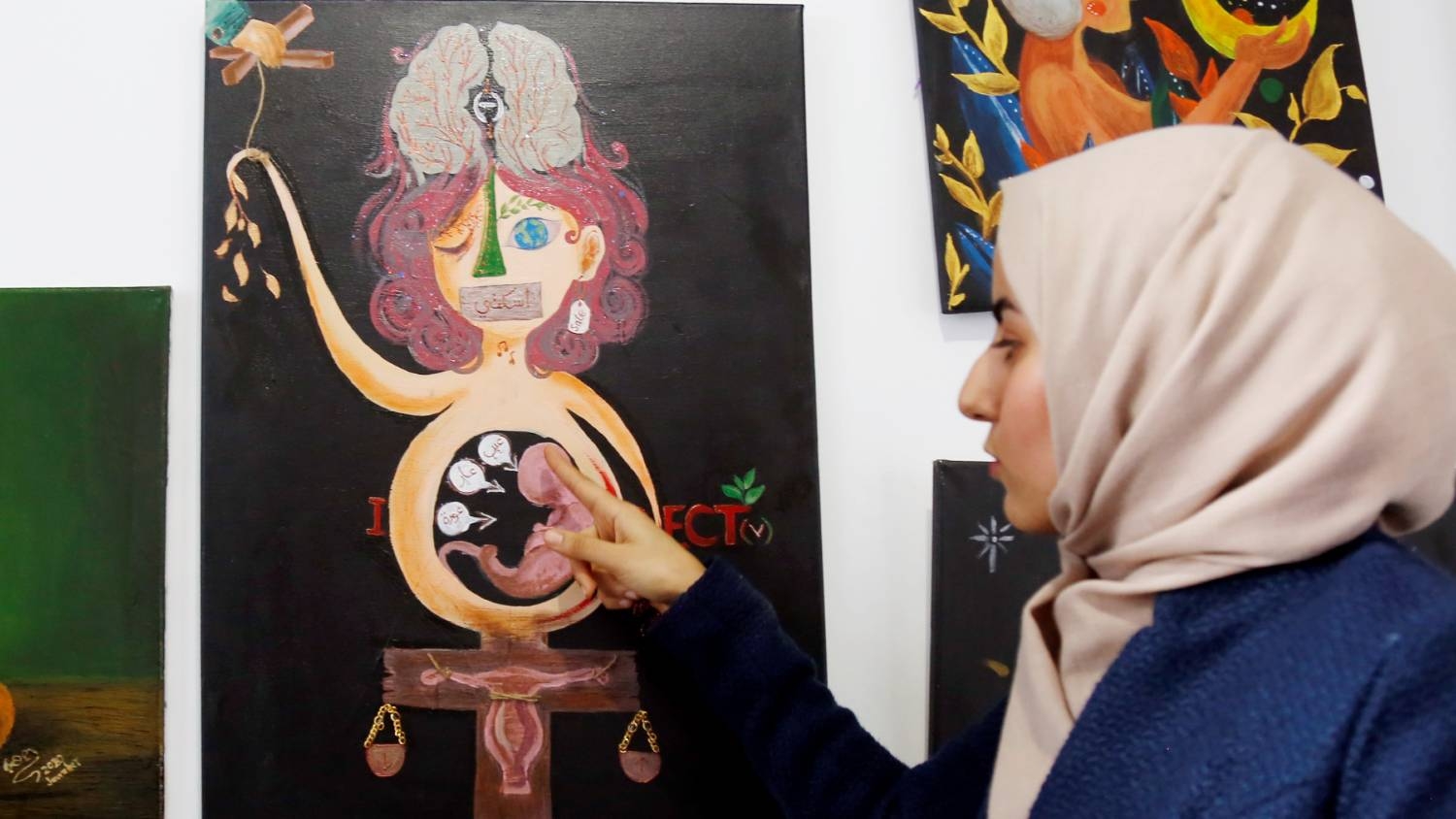
In pictures: A surreal vision of womanhood by Yemeni artist Jawaher al-Mughlis

The Yemeni artist Jawaher al-Mughlis began painting when she was just five. Her potential was immediately spotted by her school teachers who encouraged her to pursue art as a career. Now in her early 20s, her work has been exhibited both in Yemen and abroad, picking up an award at an exhibition in Turkey in 2020. Painting primarily in a surrealist style, the focus of her art, as evident in the collection of paintings above, is women and specifically the issues of shame, equality and freedom. [All images: Mohammed Hamoud]

This piece depicts a pixie-like woman hunched over with her arms around her knees and a key in her back to wind her up and bring her to life. Mughlis says it represents how society controls women in a manner that is often hidden from view, “from behind...as if in a game." She has painted the figure naked to demonstrate the vulnerability of women in society. The turqoise-coloured hair symbolises the idea of freedom. Mughlis says she participates in NGO programmes to empower women in Yemeni society.

Mughlis is a graduate of Sanaa University and works as a laboratory doctor by day, producing her paintings in her spare time. She has no plans to quit her day job despite her commitment to art, arguing that Yemen is in need of people who have her skills.
The country has been ravaged by war since 2014; a conflict that has drawn in regional powers including Saudi Arabia, and has led to a humanitarian disaster. She says her art is intended to empower and give hope to Yemen's women amid the many crises they face.
In the painting above, a female figure looks wistfully at a crescent moon she is holding, while sitting on a bed of plants that grow around her. The image simultaneously delivers a message of fatigue and hope.

Perhaps influenced by her medical training, there is also a didactic element to the art Mughlis produces, as evident in the painting above. It depicts a hookah pipe morphing into the tentacles of an octopus with the hose and mouthpiece turning into a snake. In Yemen, as in other Middle Eastern states, smoking tobacco through hookah pipes is a common pastime, as is the chewing of the stimulant called khat. In the painting, khat leaves appear green while they are being consumed, yet turn a shade of yellow around the head, where Mughlis suggests the leaf begins to have a "toxic" effect on the mind. The way the snake and the leaves wrap around the figure's body symbolises the strangling spiritual impact that recreational drugs have.

In this image, Mughlis takes aim at the damaging effect of social media. In the painting, hands crowd around the female figure as she looks down forlornly. The arms seem like they are ready to pull down and consume the woman. Mughlis says they represent men who blackmail women after acquiring private photographs or other personal information about them. But the painting also carries in it a note of optimism; the flame-haired woman holds the key to her own freedom. She says: "We can demonstrate our strength on social media sites and show blackmailers that even if they get ahold of private images, they are just pictures and they will not be able to blackmail or control us."

Mughlis says the image above represents the "equilibrium of men and women in the world and their compatibility". The pair are in a delicate balancing act, held in place by a thin and fraying rope; any over-exertion by one figure brings down the other.

By far one of the most complex of al-Mughlis's pieces, this one is said to represent shame; both the imposed shame on womanhood, and the shame felt by society if her freedom is not reigned in. A piece of wood seals the mouth of the female figure with the words "uskooti", meaning "shut up". The reference is to the expectation that women should be encouraged to remain silent. However, musical notes decorate the figure's neck, suggesting that if she did have the ability to speak it would be something "that benefits society and enhances their happiness". Her earring is a sale tag, symbolising the treatment of women as commodities who are expected to bring money in through marriages that often serve as a source of income through dowries.
This painting tackles the issue of racism in Yemeni society. The character's body is layered with different shades of skin tone, with the comb curving along the top of her spine representing equality. The symbolism of the comb stems from a tradition attributed to the Prophet Muhammad in which he says that human beings are equal "like the teeth of a comb". The books balancing on the woman's head and the sun shining down represent a woman's ability to reach the pinnacle of success, while the solar system wrapped around the figure's womb symbolises how women are key to educating and raising the next generation.
Middle East Eye propose une couverture et une analyse indépendantes et incomparables du Moyen-Orient, de l’Afrique du Nord et d’autres régions du monde. Pour en savoir plus sur la reprise de ce contenu et les frais qui s’appliquent, veuillez remplir ce formulaire [en anglais]. Pour en savoir plus sur MEE, cliquez ici [en anglais].




